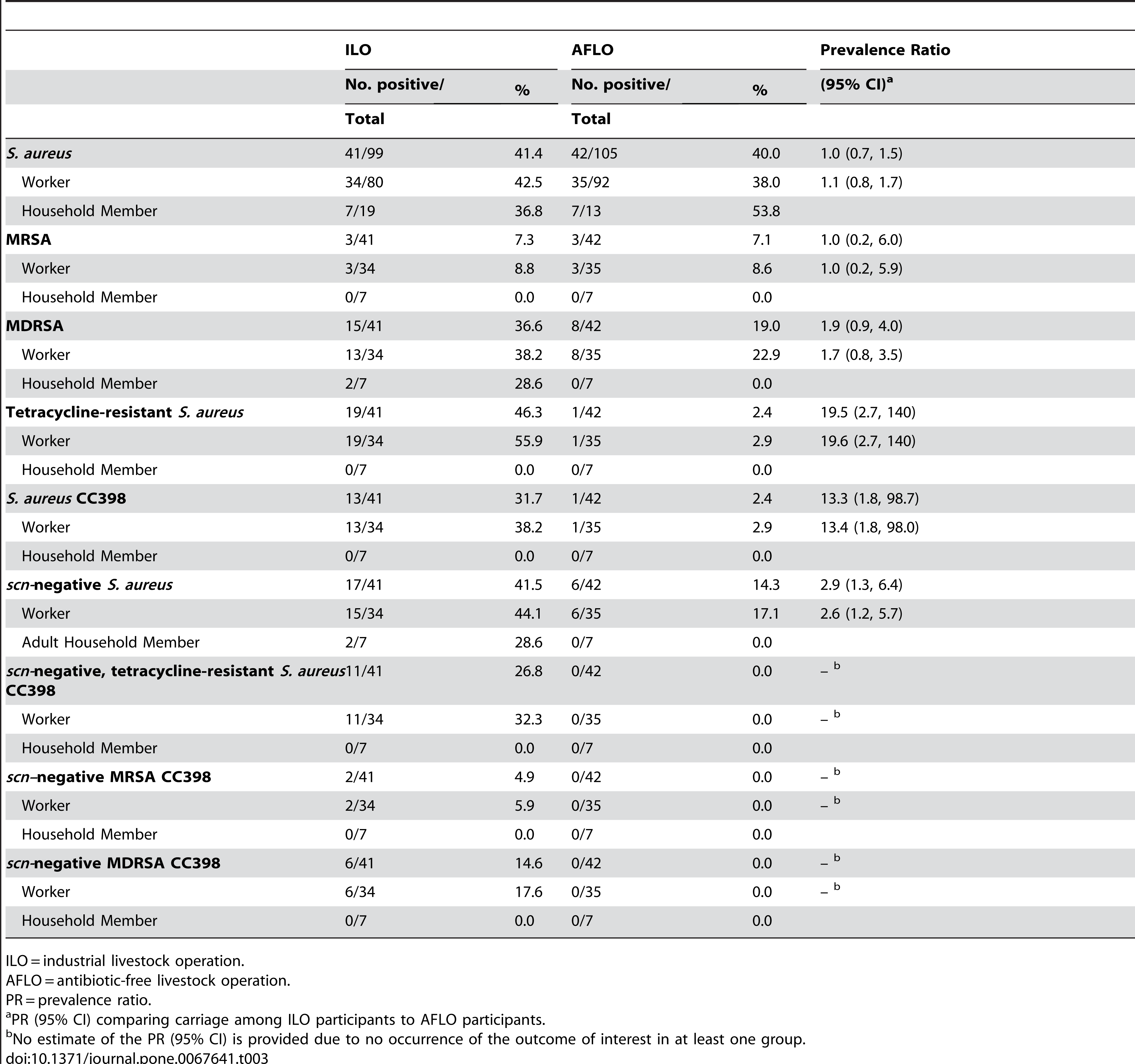The noses of industrial livestock workers in North Carolina contained
drug-resistant bacteria
- livestock-associated Staph
- while the noses of antibiotic-free livestock workers did not, according to a new paper. Workers were not experiencing Staph infections at the time of the study.
The drug-resistant bacteria examined were Staphylococcus aureus, commonly known as "Staph," which include the well-known bug MRSA (methicillin-resistant Staphylococcus aureus). New Staph strains are emerging in people who have close contact with livestock animals and while everyone in the study had direct or indirect contact with livestock, only industrial workers carried antibiotic-resistant Staph with multiple genetic characteristics linked to livestock.
Some industrial livestock operations raise animals in large conferment buildings and use antibiotics, including non-therapeutically in animals' feed and water to promote their growth. Previous studies have detected strains of drug-resistant S. aureus from livestock, first among farm workers, and subsequently in hospital and community settings in Europe. In the United States, such strains have been detected among industrial livestock operation workers in Iowa and now the authors believes that these bacteria could follow a similar trajectory into the community in North Carolina. North Carolina is a major livestock producer, ranking second behind Iowa in hog production in the United States.
S. aureus can cause a range of illnesses in humans, from minor to life-threatening skin, bloodstream, respiratory, urinary and surgical site infections. Like most illnesses caused by bacteria, S. aureus infections are treated with antibiotics. According to the Centers for Disease Control and Prevention, some Staph cannot be killed by antibiotics, meaning they are resistant. MRSA is a strain of Staph bacteria that is resistant to methicillin and certain first-line antibiotics called beta-lactams. Infections with drug-resistant strains, like MRSA, can be particularly difficult to treat.
The research used interviews and nose swabs that were collected and analyzed from individuals who worked at two different types of livestock operations in North Carolina. At industrial livestock operations, animals are grown in large confinement buildings using antibiotics. At antibiotic-free livestock operations, animals are grown without the use of antibiotics, typically outdoors on pasture. Researchers tested the S. aureus isolated from nose swabs for resistance to a range of antibiotics and for genetic markers considered to indicate that the bacteria may have come from livestock.
The workers were not experiencing Staph infections at the time of the study, but when antibiotic resistant bacteria do cause infections, they can be harder to treat. Researchers found that S. aureus that were multidrug-resistant were roughly twice as prevalent among individuals exposed to the industrial compared to the antibiotic-free livestock operation environment and S. aureusthat were resistant to tetracycline – an antibiotic that has been used in industrial livestock production since the 1950's – were 19 times as prevalent among industrial compared to antibiotic-free livestock operation workers.
Click image for full size. Phenotypic and molecular characteristics of S. aureus carriage among study participants by livestock exposure group, North Carolina, 2011. Link and credit: doi:10.1371/journal.pone.0067641
The authors from the Rural Empowerment Association for Community Help, the Statens Serum Institute, the Johns Hopkins Bloomberg School of Public Health, the University of North Carolina at Chapel Hill and George Washington University say their results confirm earlier findings in Iowa and raises concern about antibiotics use in livestock production.
"This study shows that these livestock-associated strains are present among workers at industrial livestock operations and that these strains are resistant not just to methicillin, but to multiple antibiotics – including antibiotics that are used to treat human infections," said Christopher Heaney, PhD, corresponding author of the study and assistant professor of Environmental Health Sciences and Epidemiology at the Johns Hopkins Bloomberg School of Public Health.
Citation: Rinsky JL, Nadimpalli M, Wing S, Hall D, Baron D, et al. (2013) Livestock-Associated Methicillin and Multidrug Resistant Staphylococcus aureus Is Present among Industrial, Not Antibiotic-Free Livestock Operation Workers in North Carolina. PLoS ONE 8(7): e67641.doi:10.1371/journal.pone.0067641





Comments